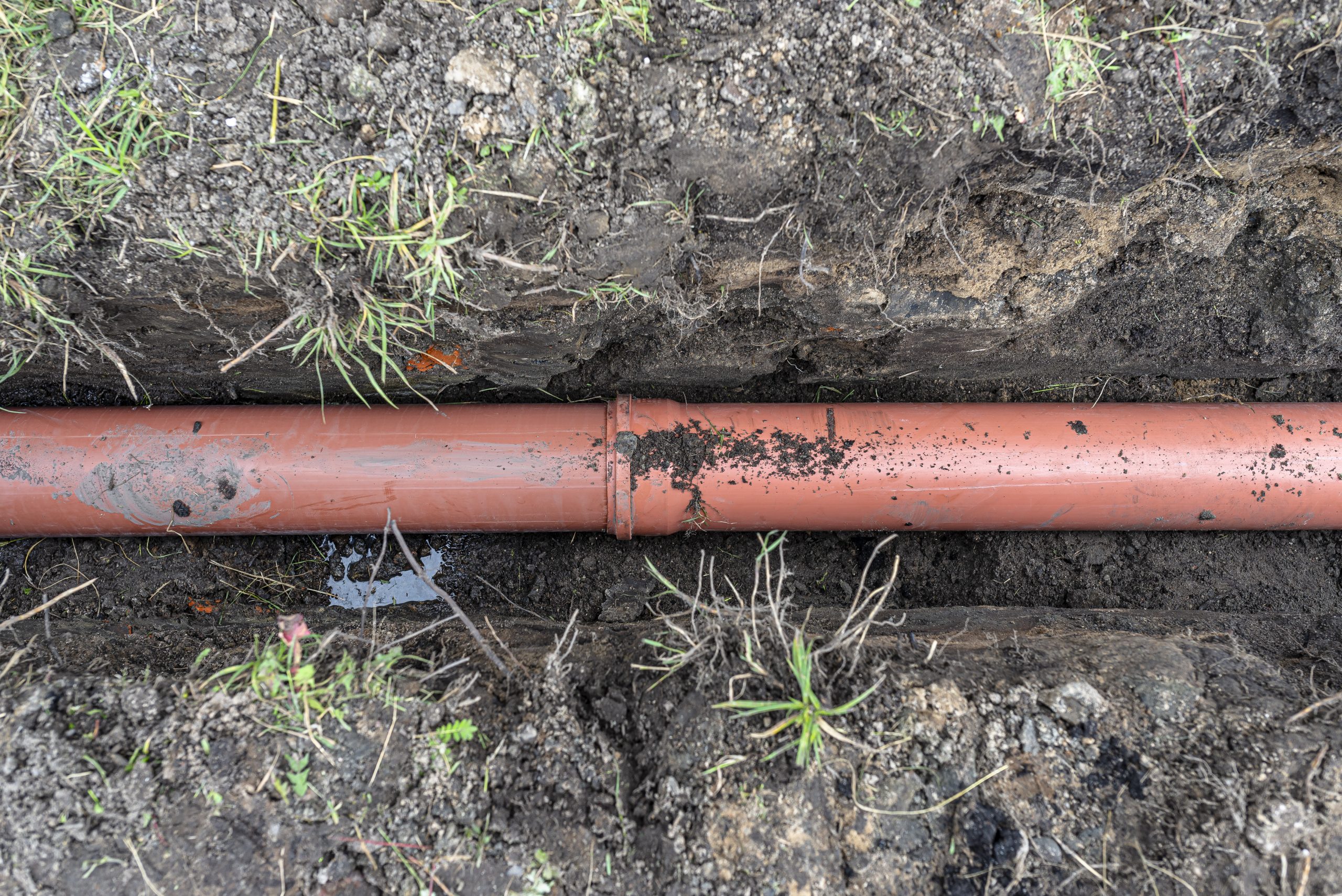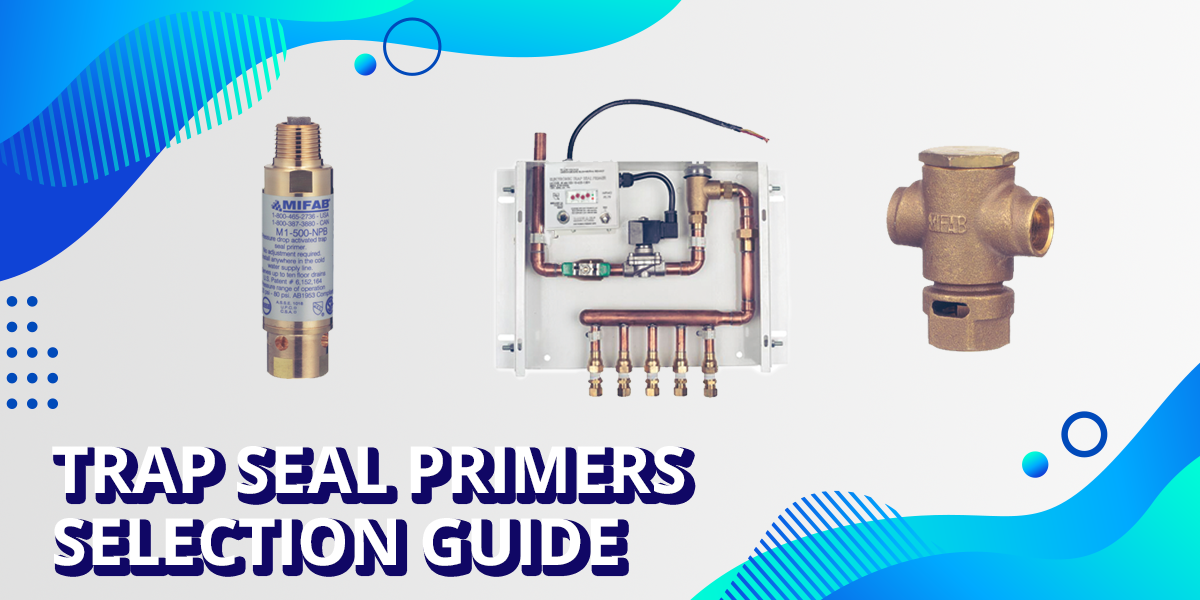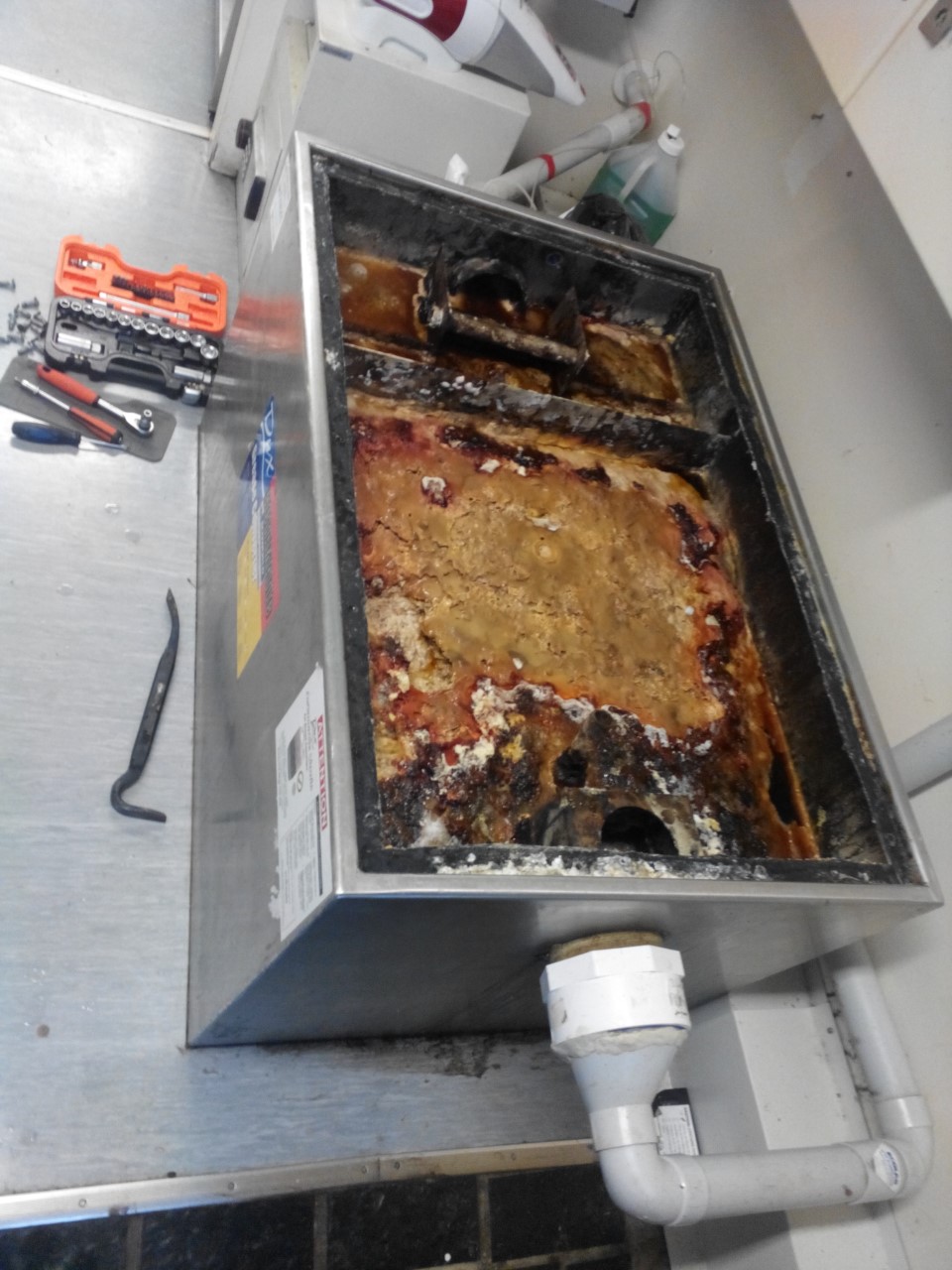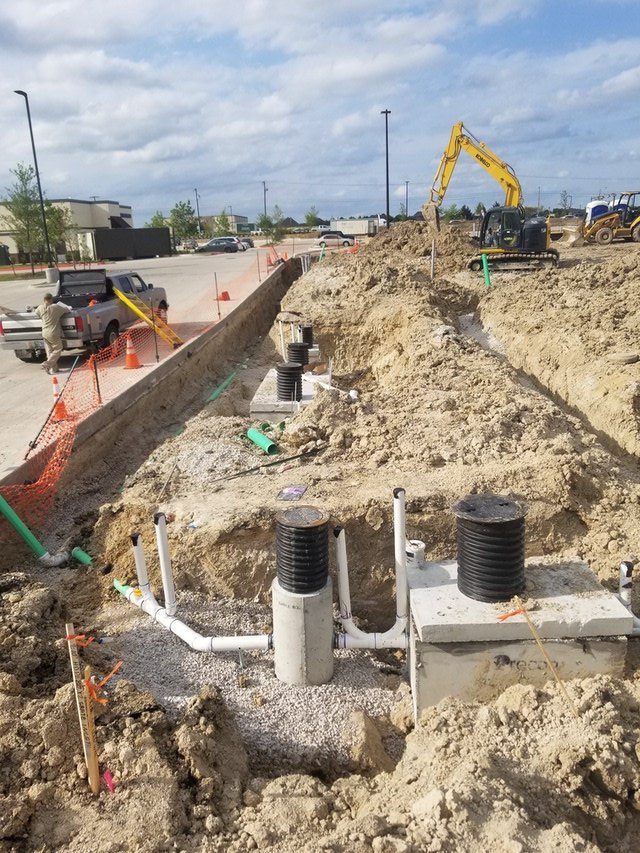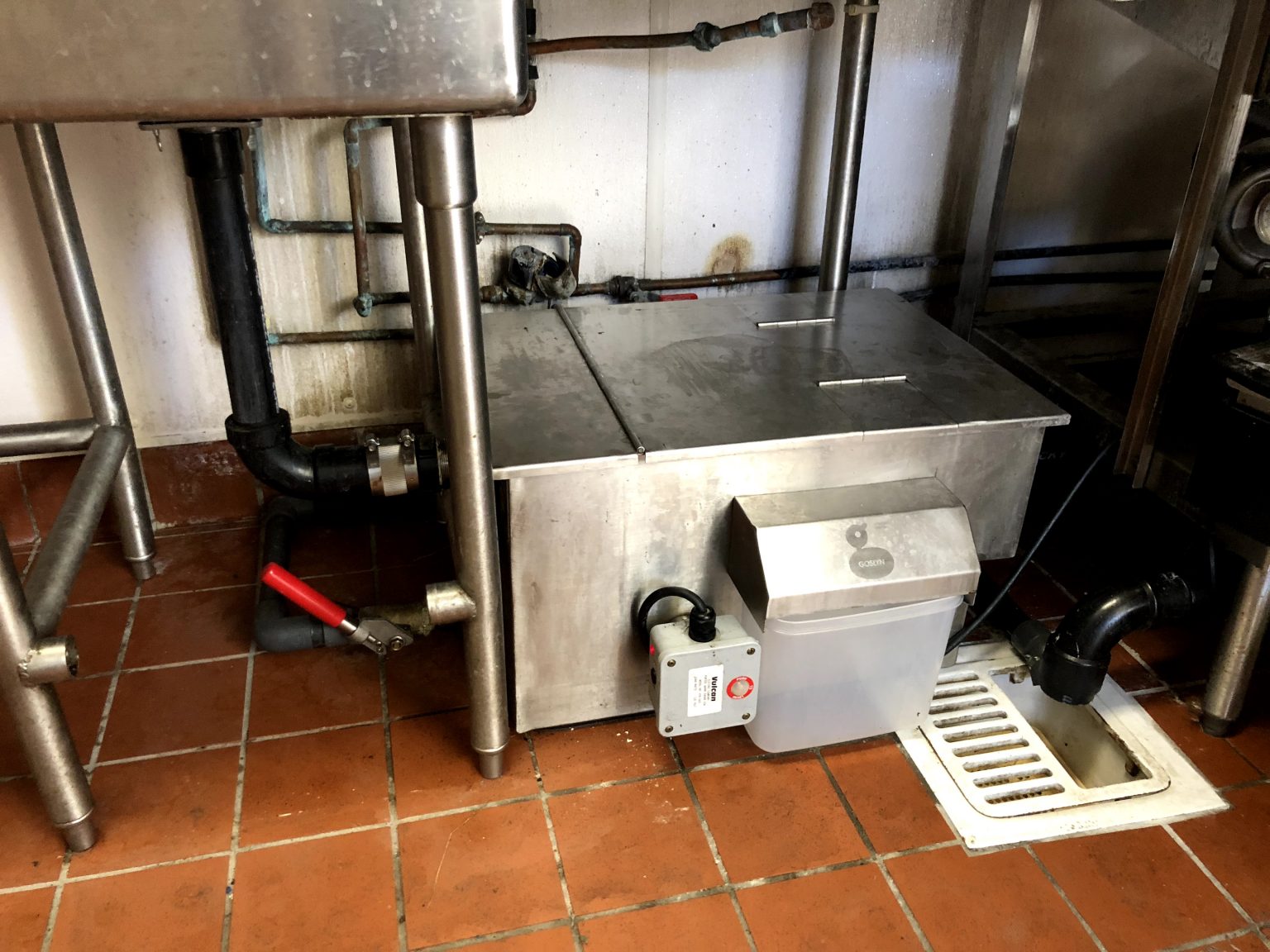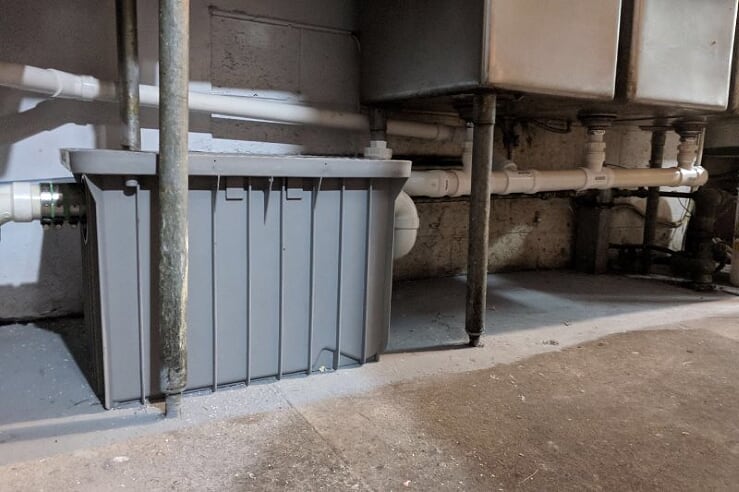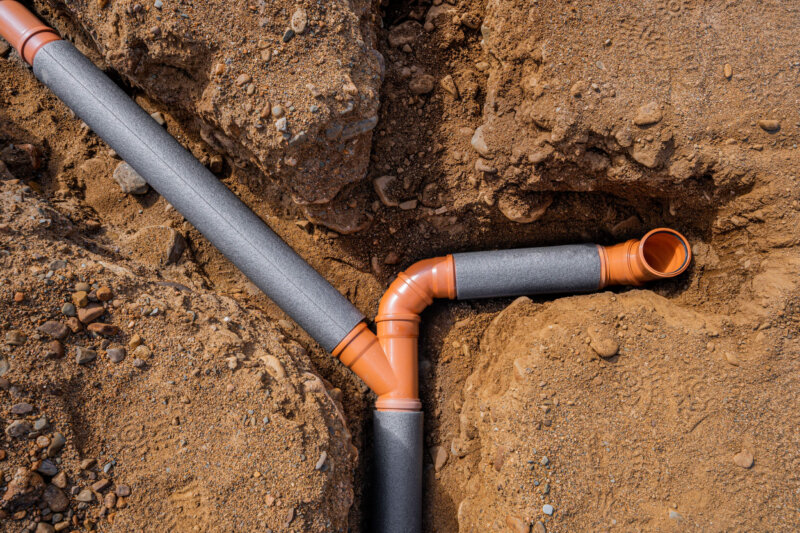One of the most common and effective ways to run your kitchen sink drain is by installing a P-trap. This is a curved pipe that fits under your sink and traps debris and grease from going down the drain. It also prevents sewer gases from entering your home. P-traps are relatively easy to install and can be found at most hardware stores.1. Install a P-trap
If your sink is located further away from your main plumbing line, you may need to use an S-trap instead of a P-trap. Unlike a P-trap, an S-trap has a vertical pipe that connects to the drain pipe, making it a better option for longer distances. S-traps are also great for sinks that have a lower drain outlet.2. Use a S-trap
For efficient drainage, it is important to connect your kitchen sink drain to a vent stack. This allows air to flow through the pipes, preventing any suction or backflow that can cause clogs or bad odors. The vent stack also helps to equalize pressure in the pipes, ensuring a smooth flow of water.3. Connect to a vent stack
If your kitchen sink is located in an area that is not easily reached by the main plumbing line, you can use a drain pipe extension to connect the two. This is especially useful for kitchens located in basements or on lower levels of a house. Drain pipe extensions can be found at most hardware stores and come in various lengths to fit your needs.4. Use a drain pipe extension
If you frequently deal with food scraps and leftovers in your kitchen sink, installing a garbage disposal can be a game changer. This device grinds up food waste into small particles that can easily flow through the drain pipes. Just make sure to use plenty of water while the garbage disposal is running to prevent any clogs.5. Install a garbage disposal
Having a cleanout installed in your kitchen sink drain is essential for easy access to clear any clogs or debris. This is a small cap or plug that is placed in the drain pipe and can be easily removed to reach any blockages. It is recommended to have a cleanout installed in every drain pipe to make maintenance easier.6. Use a drain pipe with a cleanout
If your home is not connected to a city sewer system, chances are you have a septic tank. In this case, you will need to connect your kitchen sink drain to the septic tank. Make sure to follow the specific guidelines for your septic system to ensure proper drainage and avoid any potential problems.7. Connect to a septic tank
A trap primer is a small device that adds a small amount of water to the trap every time water runs through the drain pipes. This prevents the trap from drying out and letting sewer gases enter your home. This is especially important if your kitchen sink is not used frequently, as the trap can dry out quickly.8. Use a drain pipe with a trap primer
If you frequently cook with oils and grease, installing a grease trap in your kitchen sink drain is a must. This device captures any grease and oils from going down the drain and prevents them from causing clogs in your pipes. Grease traps are also essential for commercial kitchens to comply with health and safety regulations.9. Install a grease trap
To prevent any sewage backups in your kitchen sink, consider installing a backwater valve in your drain pipe. This valve allows water to flow out but prevents any water or sewage from flowing back in. This is especially important if your home is located in a flood-prone area or if your main plumbing line is prone to clogs. In conclusion, there are various ways to run your kitchen sink drains, and the best option for you will depend on your specific needs and plumbing setup. Make sure to regularly maintain your drain pipes and consider these different methods to ensure proper drainage and prevent any potential issues.10. Use a drain pipe with a backwater valve
Different Ways to Run Kitchen Sink Drains
/how-to-install-a-sink-drain-2718789-hero-b5b99f72b5a24bb2ae8364e60539cece.jpg)
Introduction
 When it comes to designing a house, the kitchen is often considered the heart of the home. It's where meals are prepared, memories are made, and families gather. As such, it's important to have a functional and efficient kitchen. One key element of a well-designed kitchen is the sink, and more specifically, the kitchen sink drain. In this article, we will explore different ways to run kitchen sink drains, from traditional methods to innovative solutions.
When it comes to designing a house, the kitchen is often considered the heart of the home. It's where meals are prepared, memories are made, and families gather. As such, it's important to have a functional and efficient kitchen. One key element of a well-designed kitchen is the sink, and more specifically, the kitchen sink drain. In this article, we will explore different ways to run kitchen sink drains, from traditional methods to innovative solutions.
Traditional Drainage System
 Traditionally, kitchen sink drains are connected to the main sewage line through a series of pipes and traps. The pipes are typically made of PVC or metal and are connected using fittings. This type of drainage system is reliable and has been used for many years. However, it can be prone to clogs and leaks, which can be a hassle for homeowners.
Traditionally, kitchen sink drains are connected to the main sewage line through a series of pipes and traps. The pipes are typically made of PVC or metal and are connected using fittings. This type of drainage system is reliable and has been used for many years. However, it can be prone to clogs and leaks, which can be a hassle for homeowners.
Island Sink Drainage
 In recent years, the trend of having a kitchen island has become increasingly popular. This design choice not only adds more counter space but also provides a unique opportunity for sink placement. Instead of running the drain pipe through the floor, island sinks can be connected to a drainage system using an air admittance valve. This valve allows air to enter the system, preventing water from being sucked out of the traps. This solution is perfect for those who want a more open and modern kitchen design.
In recent years, the trend of having a kitchen island has become increasingly popular. This design choice not only adds more counter space but also provides a unique opportunity for sink placement. Instead of running the drain pipe through the floor, island sinks can be connected to a drainage system using an air admittance valve. This valve allows air to enter the system, preventing water from being sucked out of the traps. This solution is perfect for those who want a more open and modern kitchen design.
Wall-Mounted Sink Drainage
 For those looking for a minimalist and sleek kitchen design, a wall-mounted sink with a hidden drain pipe is an excellent option. This type of sink is mounted directly to the wall, and the drain pipe runs behind the wall, hidden from view. It provides a clean and uncluttered look to the kitchen while still maintaining functionality. However, this option may require some additional plumbing work and should be installed by a professional.
For those looking for a minimalist and sleek kitchen design, a wall-mounted sink with a hidden drain pipe is an excellent option. This type of sink is mounted directly to the wall, and the drain pipe runs behind the wall, hidden from view. It provides a clean and uncluttered look to the kitchen while still maintaining functionality. However, this option may require some additional plumbing work and should be installed by a professional.
Undermount Sink Drainage
 Another popular design choice for modern kitchens is an undermount sink. This type of sink is installed beneath the countertop, leaving a smooth and seamless surface. To maintain the sleek look, the drain pipe can be routed through the back of the cabinet and connected to the main sewage line. However, this option may require some extra planning during the kitchen design phase to ensure proper placement and installation.
Another popular design choice for modern kitchens is an undermount sink. This type of sink is installed beneath the countertop, leaving a smooth and seamless surface. To maintain the sleek look, the drain pipe can be routed through the back of the cabinet and connected to the main sewage line. However, this option may require some extra planning during the kitchen design phase to ensure proper placement and installation.
Conclusion
 In conclusion, there are various ways to run kitchen sink drains, each with its own benefits and considerations. Whether you prefer a traditional, island, wall-mounted, or undermount sink, it's essential to understand the different options available to you. Whichever design you choose, make sure to consult with a professional plumber to ensure proper installation and functionality. With the right drainage system, you can create a beautiful and functional kitchen that will be the envy of all your friends and family.
In conclusion, there are various ways to run kitchen sink drains, each with its own benefits and considerations. Whether you prefer a traditional, island, wall-mounted, or undermount sink, it's essential to understand the different options available to you. Whichever design you choose, make sure to consult with a professional plumber to ensure proper installation and functionality. With the right drainage system, you can create a beautiful and functional kitchen that will be the envy of all your friends and family.



















:quality(70)/arc-anglerfish-arc2-prod-cmg.s3.amazonaws.com/public/PBCU6I6EGRGES3QBXNIV46VMUI.jpg)









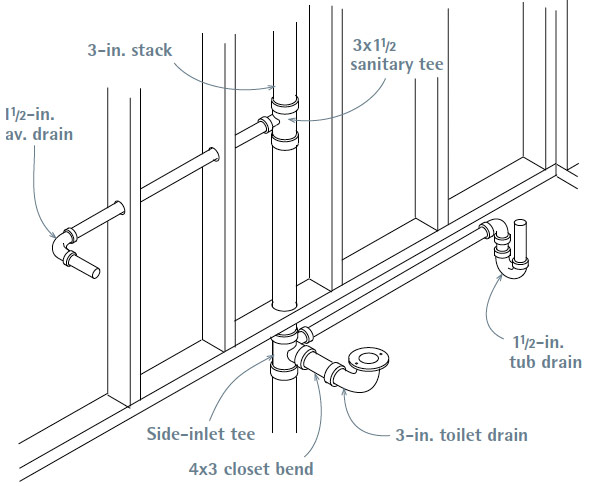









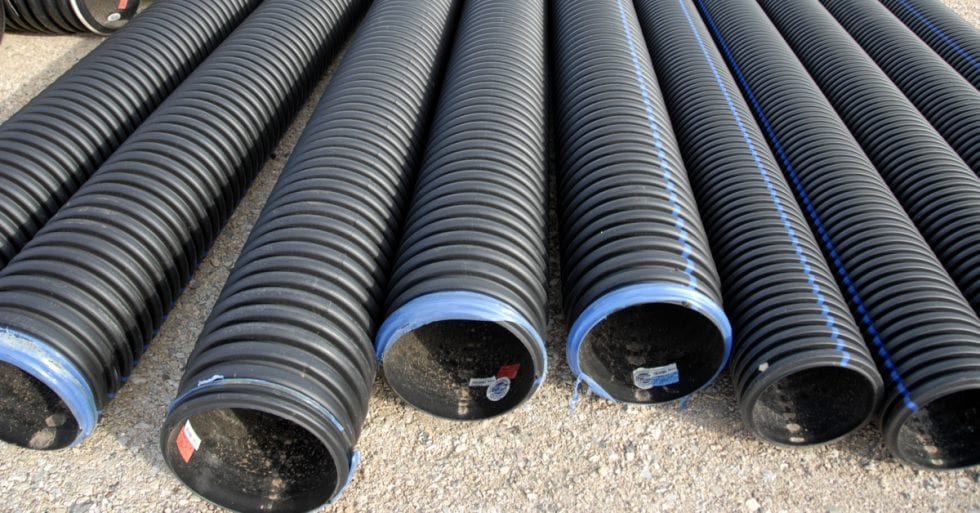












:max_bytes(150000):strip_icc()/garbage-disposal-installation-1824830-01-73cf0263b344447488ed8e15f7f2bc78.jpg)























